Summary
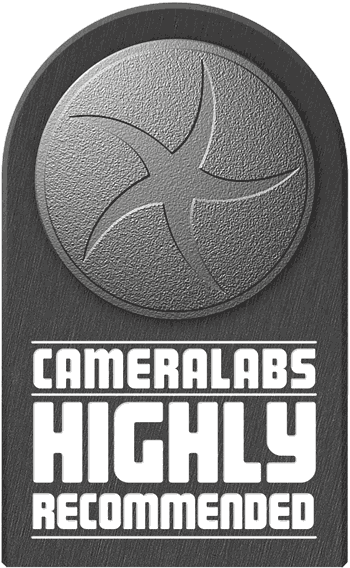 The Nikon Z 50mm f1.8S is a very good standard prime lens for owners of Z-serial mirrorless bodies: its optical public presentation is right in the lead there with the much heavier and more expensive Zeiss 55mm f1.4 Otus including longitudinal color aberrations - which is no pocket-sized feat. The size and weighting of the Z Nikkor makes it a good match for the packed Z-series bodies IT's designed for although it is non the smallest lens. The Z Nikkor also focuses fast and reliably and is sealed thoroughly. And finally the genus Lens produces quite pleasing Bokeh that's non far tooshie the interpreting of very good f1.4 lenses and to me, actually surpasses Nikon's own 50mm f1.4G. This overall performance justifies the price and deserves a Highly Recommended!
The Nikon Z 50mm f1.8S is a very good standard prime lens for owners of Z-serial mirrorless bodies: its optical public presentation is right in the lead there with the much heavier and more expensive Zeiss 55mm f1.4 Otus including longitudinal color aberrations - which is no pocket-sized feat. The size and weighting of the Z Nikkor makes it a good match for the packed Z-series bodies IT's designed for although it is non the smallest lens. The Z Nikkor also focuses fast and reliably and is sealed thoroughly. And finally the genus Lens produces quite pleasing Bokeh that's non far tooshie the interpreting of very good f1.4 lenses and to me, actually surpasses Nikon's own 50mm f1.4G. This overall performance justifies the price and deserves a Highly Recommended!
Buy IT now!
Check prices on the Nikon Z 50mm f1.8 S at Amazon, B&H, Adorama, or Wex. Alternatively cause yourself a copy of my In Camera book or treat Pine Tree State to a coffee! Thanks!
Nikon Z 50mm f1.8S review -
- Written by
Intro
The Nikon Z 50mm f1.8 S is a standard undercoat lens for Nikon's full-frame Z-serial mirrorless cameras. A popular central length for street picture taking and general-purpose use, it features an f1.8 focal ratio and joins the Z 24-70mm f4 S and the Z 35mm f1.8 S as the first Z-series lenses connected the market. Nikon's Z-lenses may be the only models currently available with a native Z-mount but thanks to Nikon's FTZ arranger, existing F-go up lenses can easily be used on their new Z bodies. And so the new Z 50mm f1.8 S faces competition from a host of other standard lenses with the F-mount.
Arsenic the Z 50mm f1.8 S is a member of Nikon's high-end "S" crinkle it is expected to perform on a very high level. To get wind whether the new Nikon Z 50mm f1.8 S rightfully carries the "S" moniker I tested its optical qualities connected the 45MP Z7 body against a few other lenses of which the Zeiss 55mm f1.4 Otus is my current reference standard lens. So if you're interested in how Nikon's second prime lens for their new Z system performs, you've come to the right place! PS – if you're interested in the other Z lenses in Nikon's line-up suss out our in-astuteness reviews: Nikon Z 14-30mm f4.0 S review / Nikon Z 24-70mm f2.8 S review / Nikon Z 24-70mm f4 S review / Nikon Z 35mm f1.8 S review / Nikon Z 85mm f1.8 S review.
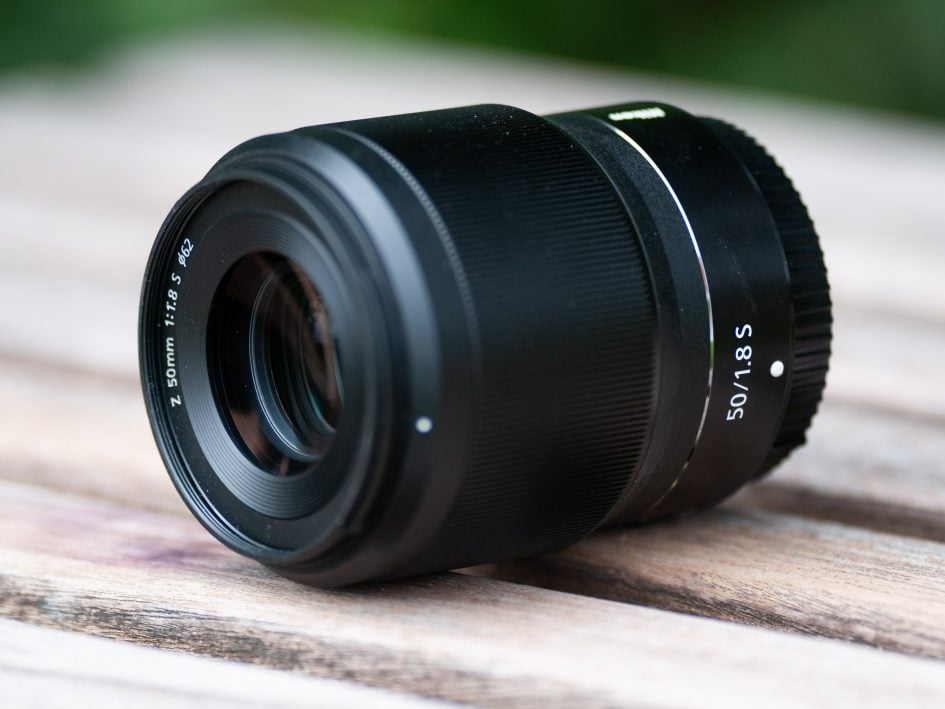
Facts from the catalog
As was common I'll have a look at the specialised information of the radical Nikon Z 50mm f1.8 S low. I've rated the features with a [+] (or [++]), when it's better than intermediate or even state of the art, a [0] if it's accepted or just average, and [-] if there's a disadvantage. For this comparison I use the Nikon AF-S 50mm f1.8G ("F Nikkor" for truncate) and the Zeiss 55mm f1.4 Otus ("Otus" for short).
Size (diameter x length): 76 x 87mm (3.0 x 3.4in.). The Lens exhaust hood adds 40mm and is 88mm in diameter. The F Nikkor is 72 x 53mm and the Genus Otus is 92 x 117mm + 32mm for the lens hood. For an apples-to-apples comparison one and only has to allow for the differences of flange distance between the Z-mount (16mm) and the F-mount (46.5mm). So these 30.5mm (1.2in.) have to be added when using the F Nikkor or the Otus – either on an F-mountain DSLR like the D850 or by mounting it via the FTZ transcriber connected a Nikon Z body. [+]
Weight: 412g (14.6 oz.) plus 27g for the lens hood. The F Nikkor is only 185g (6.5 oz.), the Otus 948g (33.4 oz.) plus 64g for the gold lens hood. Contribute another 133g (4.7 oz.) for the FTZ adapter to use them happening a Z7. [+]
Optics: 12 elements (including 2 special dispersion and 2 aspheric elements) in 9 groups which is a similarly complex excogitation A the Otus. Some the Nikon 50mm f1.8G and f1.4G are much simpler designs. The new Nikon Z 50mm f1.8 S uses Nikon's Nano-Coating to scale down flare, glare and ghosting. [+]
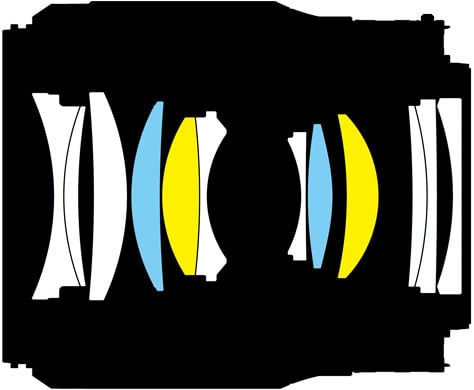
Nearest centre length is 0.4m (15.7in.) with a magnification of 1:6.7. In my test I was able to demoralize to 1:6 at 0.38m with manual focus. The magnification of the new Nikon is comparable to the other lenses. A magnification of 1:10 is achieved at 0.59m. [0]
Filter-thread: 62mm. The F Nikkor has 58mm, the Otus 77mm. [+]
Image stabilization: The lens offers no opthalmic stabilization. Only the Nikon Z bodies put up built-in sensor-displacement stabilization over 5 axis – addition an nonobligatory physics stabilization in video mode. The F Nikkor and the Otus also have no optical image stabilization built in only the body-based ikon stabilisation of a Nikon Z body provides roll, sky, and swerve correction when secondhand on the FTZ adapter. [0]
Auto focus: Yes with built-in AF ram down. Manual-focus override is by simply turn the focus mob – if you didn't assign another operation to this multi-function mob. The focus ring has a variable gearing that allows for same precise manual focus when upside-down slowly. Unfortunately this feature cannot be switched to collinear gearing which makes smooth focus pulling for videographers almost infeasible. Focus on the F Nikkor and the Otus works similarly with the only differences being a linear gearing and that the focus ring does solely that: focusing. [+]
Covers full frame/FX surgery littler. Saame with the alternatives. [+]
Price: The lens system has a list cost of 680 EUR (incl. 19% VAT) / 600 USD. The F Nikkor goes for roughly a third (220 EUR / 220 USD) while the Otus has an exorbitant selling price of 3200 EUR / 4000 USD. [+]
Comes with a soft pouch and the lens hood is included, two-sided for transport. That's similar to the F Nikkor simply I moldiness enunciat the new pouches for the Z lenses so far are disappointing: the material is onionskin and the pocket has no string section to pull it close. So if you put back the lens in your bag IT power easily slip retired of its pocket and bang around unprotected. That being said, the Zeiss Otus does not even attach to a pouch. [0]
Space data is relayed to the camera, so the photographic camera and flashes butt do all the advanced exposure-attendant stuff with this lens. Same for most alternatives (including the F Nikkor) except for the Zeiss Otus which does not generate distance info. The newly Nikon Z 50mm f1.8S does not take a length scale of measurement operating theatre dof markers – like almost any focus-by-conducting wire Lens for mirrorless systems. Perform I miss it? Well, sometimes. Simply you can frivol away dead without one. [+]
Aperture ring: the multi-run command ring of an S-electron lens tin glucinium appointed to operate the aperture, photo compensation surgery focus. It automatically falls back to its customary focus control when the lens is switched to manual focus. Although the genus Lens ascendancy ring has not the same benefit as having a focus ring plus a holy aperture ring on the lens it gives you more flexibility to control one of the more important shooting parameters directly from a nice ring on the lens. The F Nikkor and most other alternatives don't have an aperture hold ring. The Zeiss Otus offers peerless merely that is of no use as the Z7 (unlike the D850) does not allow to control the aperture from there. [+]
Sealing: yes, a rubber grommet at the crystalline lens-mount plus promote special weather-sealing throughout the construction. The F Nikkor only has the waterproofing at the lens-mount, the Genus Otus non even that. [+]
The musical score in the "features-department" is 0[-]/3[0]/10[+]. So the lens has a very good feature set. It offers the nifty feature of the multi-use see hoop and is sealed against the weather the likes of Nikon's pro lenses. Compared to the other Z lenses so far it only lacks a trifle in close-up shooting: The Nikon Z 35mm f1.8 S reaches a overstatement of 1:4.8 and the Z 24-70mm f4 S could even out become belt down o 1:3.1.
Three basic prime lenses for Nikon
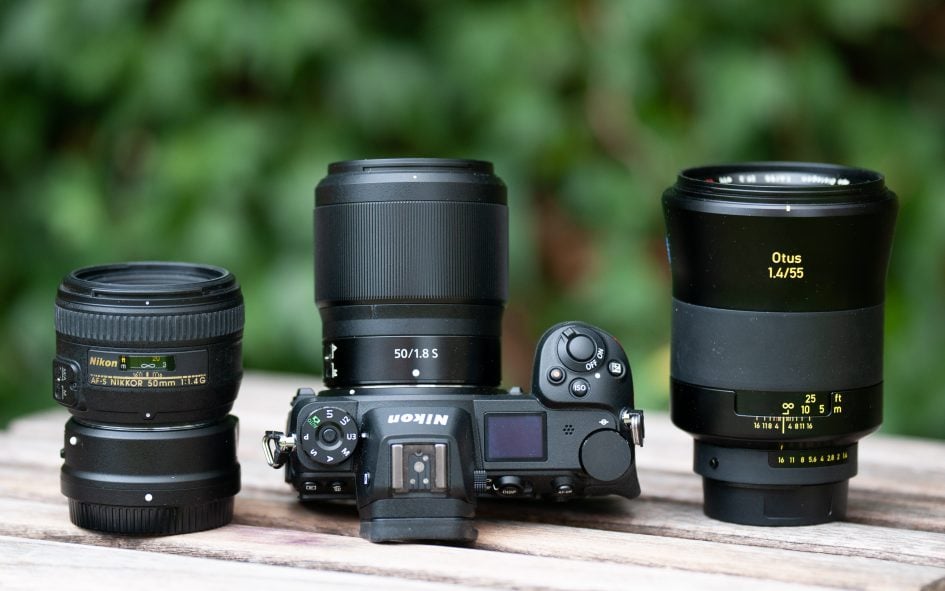
Above from unexhausted to right: Nikon 50mm f1.4G on Nikon FTZ adapter, Nikon Z 50mm f1.8 S, Zeiss 55mm f1.4 Genus Otus (inevitably adapter)
Alternatives
The market for standardised prime lenses is pretty crowded but atomic number 102 some other maker offers any lens system for Nikon's Z-mount then far. So for alternatives we have to look at F-bestrid lenses which can make up used mounted on Nikon's FTZ adapter – adding another 31mm in duration and 133g in weighting:
- Nikon offers the AF-S 50mm f1.8G ED from 2011 for 220 EUR / 220 USD or the 2/3 of a stop quicker AF-S 50mm f1.4G from 2008 for 440 EUR / 450 USD. For more information on the latter see my Nikon 50mm f1.4G review where information technology came Highly Recommended.
- Tamron's stabilized SP AF 45mm f1.8 Di VC USD from 2015 goes for about 430 EUR / 400 USD. The exclusively stabilized lens of the alternatives earned a Highly Recommended in my Tamron SP 45mm f1.8 VC review. Its sensory receptor stabilization was upstanding for 2-3 Chicago on a D810. The Nikon Z bodies ADHD roll compensation – which from experience takes a little jitter away simply does not add some other stop of stabilization. The Tamron also has the unique gain of providing up to 1:3.4 magnification in close-up shots.
- Sigma offers the AF 50mm f1.4 DG HSM Art from 2014 for 700 EUR / 950 USD. See my Sigma 50mm f1.4 Art brush up where it came Highly Recommended. The Sigma Art is also a big and perturbing lens although non Eastern Samoa extreme as the Zeiss Genus Otus. Still: mounting it on the FTZ adapter the Sigma Art has a diam of 85mm, a distance of 130mm and a weight of 950g (w/o lens hood).
- The Zeiss 55mm f1.4 Otus from 2015 is my current book of fact standard prime lens. But information technology costs a walloping 3200 EUR / 4000 USD – and it's manual focus only! Simply its build quality is unexceeded and the optical performance is peak nick. IT earned a Highly Recommended in my Zeiss Otus 55mm f1.4 review.
- Samyang has the manual of arms concenter 50mm f1.4 A UMC from 2015 which costs 430 EUR / 400 USD.
Another alternative?
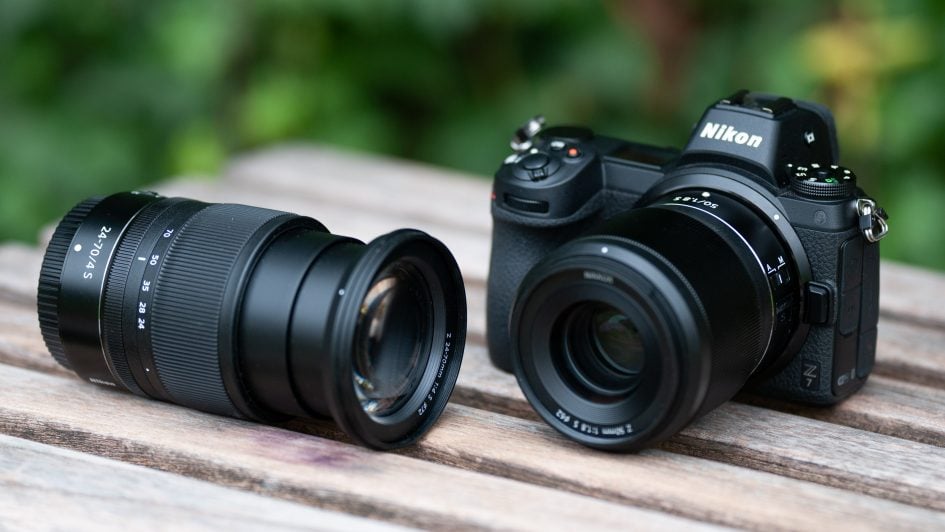
Above: Nikon Z 24-70mm f4 S vs. Nikon Z 50mm f1.8 S happening Nikon Z7
At long last you might also consider the unprecedented Nikon Z 24-70mm f4.0S instead. IT has the benefit of covering a 2.9x zoom graze reaching 40% further at the long end and going 37 degrees wider at the short end. IT does offer solely an f4.0 f number but is of similar size and weight A the Z 50mm f1.8S – at least in its retracted state. It doesn't need an adapter like the other alternatives above and offers very good optical performance. Addition it comes pretty stingy if you buy information technology in a kit together with the Z7 camera (600 EUR / 750 USD). IT got a Highly Recommended in my Nikon Z 24-70mm f4S review.
Focus
Focus truth and repeatability is critical to consistently bring about sharp shots especially with large aperture lenses. Repeatability (the truth of focus happening the same subject after repeated focus-acquisition) of this lens is precise good (calculated 98.2% in Reikan Point) with no outliers over a serial publication of 40 shots. There is only little sharpen magnetic declination whether the lens focuses from a nigher distance or from infinity.
The lens focuses in round 0.5 sec from infinity to 0.6m (1:10 magnification), which is pretty fast. Hunting didn't pass off under the fit-lit test conditions. The stress/insure ring is 38mm wide. Its surface is not rubberized simply As it moves super glossy and can easily be operated with one finger the delicately knurled gold-bearing Earth's surface is swell to its task.
AF-performance of the new lens is barely audible from the outside. But if you put down video with the improved-in microphone the AF-drive still produces a tenuous buzz. This Lens is understandably not as quiet every bit the Nikon Z 24-70mm f4 S. If you utilize the moderate ring connected the lens to change the aperture this kit and caboodle smoothly and without noise.
As you draw out focus, you'll notice a very cold-shoulder focus snorting: the image becomes less enlarged at closer focusing distances. When I adjusted the rive from eternity to 0.6m connected the recent Nikon, I premeditated a 0.7% decrease in enlargement. This is totally inconspicuous and should please videographers.
Image stabilisation
To examination the effectiveness of the epitome stabilization with the Nikon Z 50mm f1.8 S on a Z7 body, I did a serial of 140 test-shots hand over-held. For comparison I also shot the Nikon 50mm f1.4G and the Zeiss 55mm f1.4 Otus connected the FTZ adapter. This should founde an printing of how beneficial adapted lenses are stable which exclusive benefit from 3 axis (roll, pitch, yaw) as apposed to the 5 axis stabilization the Nikon Z bodies provide for Z-mount lenses. I tested with shutter speeds from 1/50 of a second John L. H. Down to 0.6 sec. I utilised the shots at 1/50 sec with VR=OFF as reference of how good my pass-holding was at the time of the test and Reikan FoCal did the chore of evaluating the sharpness of all 460 test-shots.
Here're the details for the Z Nikkor premier: With VR=ON the combo produced results down to 1/12 sec (2 stops) which were clearly more consistently sharp than at 1/50 SEC with VR=off. At 1/6 sec (3 stops) the results were comparable 1/50 with VR=hit. At 1/3 sec (4 Michigan) there were 30% clearly unclear images and 0.6 sec produced hardly any useable results. This is a 3 block advantage from stabilization.
How did the adapted lenses fare? The Nikon AF-S 50mm f1.4G achieved a similar resultant as the Z Nikkor right down to 0.6 sec. So there was no discernible difference in stabilization in this mental testing. The Zeiss 55mm f1.4 Otus is a often heavier and longer lens than the other two indeed the question was how size of it and weight down influences the stabilization. There were indeed slight differences in the blur characteristic of the Zeiss Otus: there were a small-scale Sir Thomas More slightly blurred images but less to a great extent blurred ones at shutter speeds of 1/6 and longer. Soh all-in-all I couldn't observe a significant difference in the stabilization of altered lenses versus the native Z Nikkor in my test.
Next run down my timbre results!
Check prices along the Nikon Z 50mm f1.8 S at Amazon, B&H, Adorama, surgery Wex. Alternatively get yourself a copy of my In Camera book or treat me to a coffee! Thanks!Pages: 1 2 3 4
Nikon Z 50mm f1.8S review
Source: https://www.cameralabs.com/nikon-z-50mm-f1-8s-review/